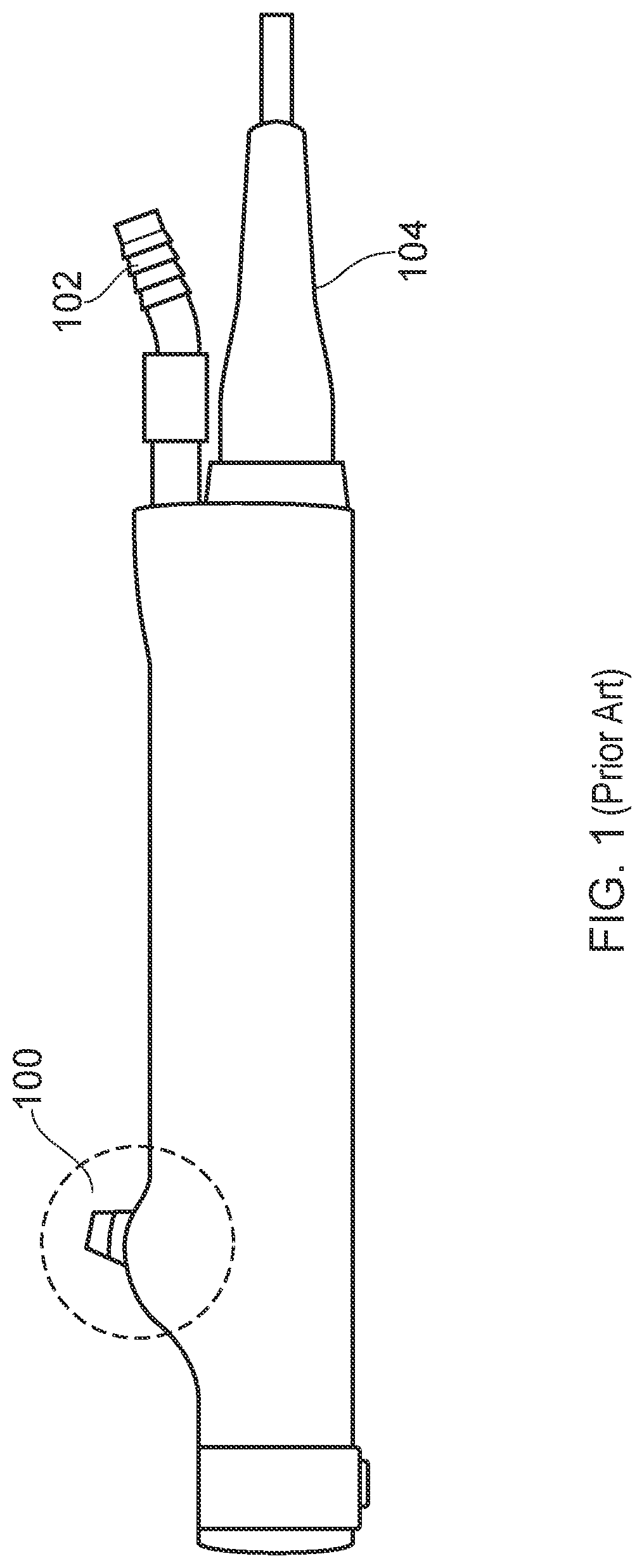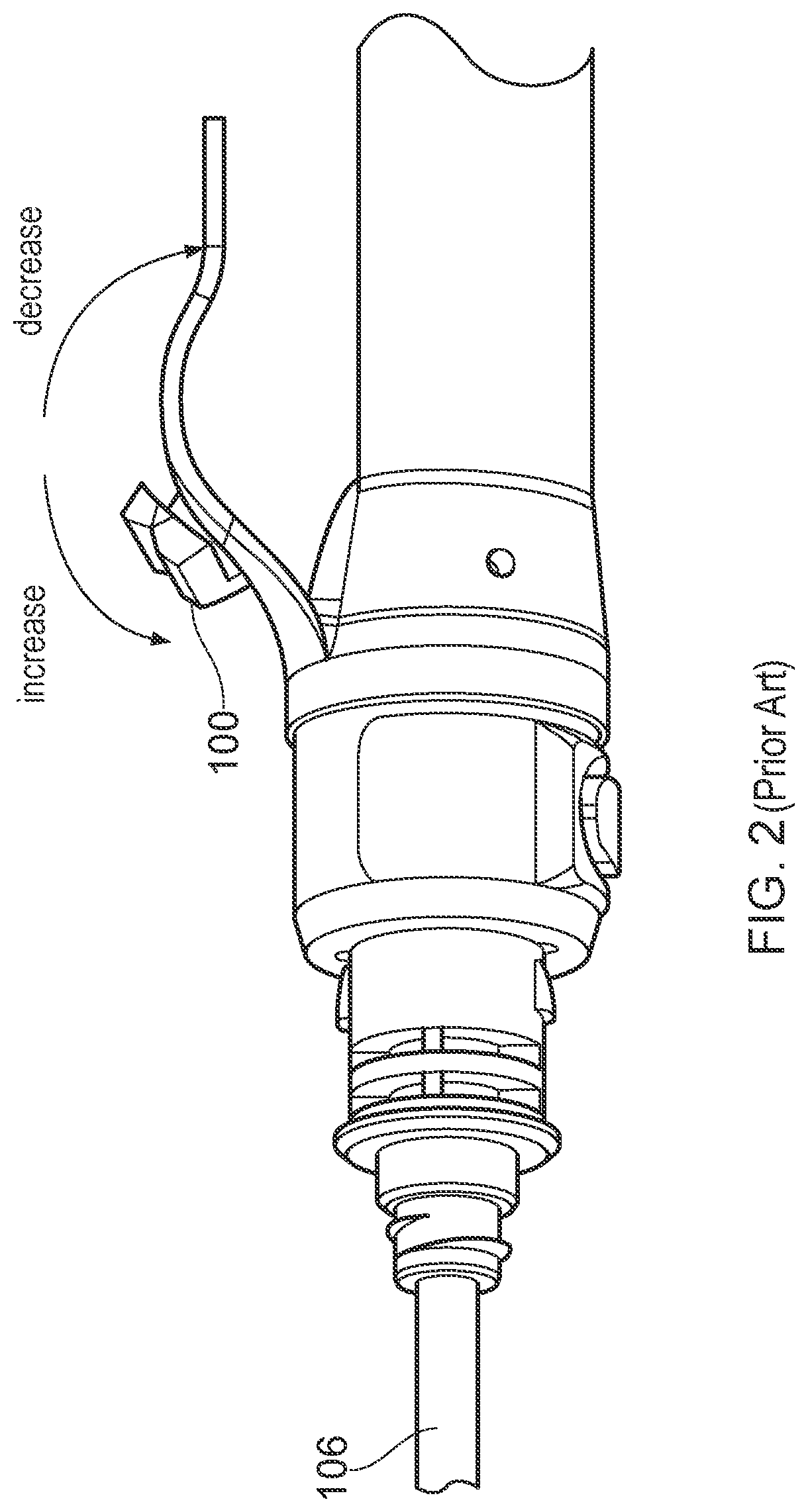Flow valve position sensor for an electrosurgical device
- Summary
- Abstract
- Description
- Claims
- Application Information
AI Technical Summary
Benefits of technology
Problems solved by technology
Method used
Image
Examples
Embodiment Construction
[0024]Referring to the drawings, FIG. 1 shows a prior art arrangement, the Stryker Formula Shaver Handpiece. The mechanical valve, operated by a lever 100, does not have any way of electronically monitoring the condition of the valve. A suction tube 102 is connected to the proximal end of the handpiece, as is a power cord 104.
[0025]FIG. 2 shows the Stryker Formula Shaver in more detail. The mechanical valve is operated by moving the lever 100 between two positions. Increasing the flow of fluid through the valve is achieved by opening the valve, and decreasing the flow of fluid through the valve is achieved by closing the valve. At the distal end, the handpiece connects to a shaft 106, which would be connected to an end effector.
[0026]FIG. 3 shows a similar prior art arrangement, the Conmed Ergo Shaver Handpiece. Again, the mechanical valve is operated by a lever 200, and there is no way of electronically monitoring the condition of the valve. A suction tube 202 is connected to the p...
PUM
 Login to View More
Login to View More Abstract
Description
Claims
Application Information
 Login to View More
Login to View More - R&D
- Intellectual Property
- Life Sciences
- Materials
- Tech Scout
- Unparalleled Data Quality
- Higher Quality Content
- 60% Fewer Hallucinations
Browse by: Latest US Patents, China's latest patents, Technical Efficacy Thesaurus, Application Domain, Technology Topic, Popular Technical Reports.
© 2025 PatSnap. All rights reserved.Legal|Privacy policy|Modern Slavery Act Transparency Statement|Sitemap|About US| Contact US: help@patsnap.com



